We go crazy about Camellias not only because of their aesthetic beauty and history but also because they were able to boost engagement and participation of a community and to transform abandoned soils into new areas of an Excellence Camellia Garden in Tuscany. The project started in 2020 and had a multi-sectoral, bottom-up approach in order to bring people closer to nature, regardless of their age, interests and groups with a focus on protection of landscape and people inclusion.
A Japanese legend relates that camellias were a gift to the world from the gods. This is particulartly true for the area called "Compitese" where a beautiful Camellia Garden, contributes to the beauty of the area and boosts engagement and participation of citizens bringing people closer to nature. The idea of transforming abandoned areas belonging to different people and close to an Excellence Camellia Garden started a couple of years ago. The owners of these pieces of land agreed to let them "clean" from brambles and reconvert them in a new area of the Camellietum, where new cultivars were planted, contributing to reduce the fire risk during the dry season and gifting further beautiful spots to tourists and citizens. These spots are particularly attractive because of the presence of a river, different cultivars including the Sinensis camellia,- the Japanese tea plant-, a picnic area and the possibility to organise events and “green thumbs labs” to connect young people with nature. This project is an example of building on a participatory process. The garden is managed by a group of citizens, organized in a cooperative enterprise, whose mission is to improve the quality of life, by promoting cultural events both for citizens and tourists, boosting the economy of the area in order to prevent abandoning due to the lack of opportunities. All measures to renovate the area were taken using nature-based solution and materials. The project is also an example of inclusion: the co-op involves workers with disabilities or disadvantaged people and in regenerating the environment took into account the needs of people with disabilities. The area is also used as a meeting point of old people during spring and summer: the co-op takes care of elderly people leaving in the borough by helping them through volounteers in every day life, increasing their sense of belonging to a community.
Please highlight how the project can be exemplary in this context
Some areas close to The Camellietum were abandoned by their owners as it was not worth using them because of the small size and the high costs of maintainance. This has opened up these areas to the spread of brambles. This project:
1) Preserved the existing forest habitat with its pine, oaks, strawberry and alder trees. These trees are perfectly complementary to camellia plants, whose most favoured habitat is close to other trees, with half shade and a wet soil.
2) Reduced fire risk because bushes without maintainance are highly exposed to this risk during summer. A big fire destroyed a lot of land nearby in 2019, causing increadible damage to vegetation and animal species.
3) Included in the garden further cultivars with the aim of preventing their extinction. The disappearance of cultivars constitutes in fact an irreversible loss.
4) Promoted sustainability and circularity: all leaves and branches of trees and brambles removed are reduced into small parts by using shredders. The material obtained is then left to macerate for two years in order to produce bio-compost to be used as fertilizer for the camellia plants. Water is obtained from the river close to the area. The cooperative volounteers cleaned the area close to the river from which waters were conveyed for irrigation purposes.
5) Preserved dry stone walls which are peculiar of the area and eventually reinforced them.
6) Extended the Camellietum: in the area new cultivars have been planted, some of them have been donated by some camellia-lovers but some have been obtained through seeds or special cutting techniques in the "Camellia nursery" nearby.
7)The pic-nic tables were built by using recycled wooden boards.
The project aimed at ensuring that our assets themselves produce the resources necessary for maintenance and development.
Please highlight how the project can be exemplary in this context
Since their arrival in Italy, around the end of the 18th century, Camellias have had great success as ornamental plants both for their adaptability to our climate and their beauty, due to their evergreen foliage and breathtaking flowers. The area chosen for this park is quite a suggestive place, historically organized and confined by stone walls, its extension was about 1000 square meters. These walls have been restored and kept because they represent elements of value and tradition for this territory . Particular attention was lended to choosing the materials, which had to blend with the natural and wild surroundings, and also to build in the traditional way since this project was inserted in order to look like part of the scenery. The Camellietum initially occupied four terraces, structured to also give it a didactic purpose. Since October 2008 the Camellietum has drastically changed its structure and essence: its surface has grown from 2000 to 7250 square meters and, it has gone from 250 specimens and 200 cultivars to 1000 plants and 725 cultivars.The 2020 Project reclaimed some abandoned areas near the garden,transforming them in further themed gardens: one dedicated to C. sasanqua, which flowers during fall, to C. higo also known as the Samurai Camellia, and finally C. sinensis, the tea plant. Furthermore, a didactic area has been installed, where botanical labs help better understand the world of camellias. A new area is dedicated to C. reticulata, dark, fragrant, small camellias. Some old paths have been restored, alongside some picnic space. Very important for the aesthetics and the quality of experience in this new area is the presence of varieties of camellias blooming in fall and winter, and the Sinensis camellia, the tea plant that can form very beautiful hedges with white small flowers in the pic-nic area contributing to the aesthetics of the garden and the quality of visit and experience.
Please highlight how the project can be exemplary in this context
The challenge of this project was the reconnection with nature of people through a cross-sectoral approch in order to 1) offer equal opportunities to disadvantaged people by giving them job opportunities, learning experiences in the nature and making the place affordable and accessible.
2) encourage community participation through co-op agreements in order to recover abandoned soils at fire risk during the summer;
3) engage citizens and owners of abandoned soils to co-design a common and shared area for the local community and visitors;
4) fight exclusion and isolation of most vulnerable groups, by breaking down barriers and creating a space accessible, affordable and friendly to all: it is possible to visit this part of the Camellia garden for free, it is not fenced and it is open to all; a wheel-chair friendly path has been built.
A key factor for the project' success is that this The Camellietum is run by a community cooperative which is also a social enterprise. Community co-ops are considered a new form of development of local welfare. Their mission is to satisfy social-economic needs of specific territories by offering services to improve life and welfare of the territory with a bottom-up approach. Residents are very proud of their territory and its beauty and are engaged in the management and co-design of the social and economic development of the area in order to avoid abandoning due to the lack of services and job opportunities. The co-op also implements actions in order to offer health, social and working support to disadvantaged residents. Despite the strong community identity of the social group forming our co-op, it is open to cooperate with other local organisations, both public and private and with other community co-ops too: the Center is part of a cooperative network in Tuscany, it is a member of the Italian Camellia Society, it participates to Slow Food events, it has links with disabilities associations. Its strength and success is the network
Please highlight how this approach can be exemplary
The project focused on regaining abandoned soils in order to expand and improve the Camellietum and to increase its visitors number. By implementig the project, it was possible to improve aesthetically the Garden; new cultivars were added, in particular camellias blooming in fall/winter and the tea plants which create nice hedges and some cultivars that are at risk of extinction. At the same time a very important measure has been taken to preserve the soil from fire risk and erosion, "cleaning" trees from brambles and taking circular and sustainable measures to guarantee maintenance of the garden. These practices will be teached to young people during the labs. These labs aim at reconnecting young people with nature and teach them the growing importance of sustainable and circulare measures to tackle environmental problems. In the past people had to rely almost on their local envoironment. Communities developed the knowledge and expertise to solve environmental and social problems locally and the total community had to be involved in order to find solutions This project inspires to what has served us well in the past. The success of our project lies in the combination of local based solutions implemented by a community that participates in designing tailor-made solutions for the beauty and the health of its territory and takes into account the inclusion of all people. The project is locally implemented and has a cross-sectoral approach combining all dimensions: -aesthatics, sustainability and inclusion.- in order to bring people closer to nature and to bridge local solutions to global issues.
The results/impacts achieved by this project are not fully evident yet, because of the pandemic restrictions that reduced the number of visits during the last period. However we can for sure state that the project has already proved to be successful: it was possible to organize the Fall Exhibition, because of the new specimens added blooming in this period. FAI (the Italian Fund protecting and enhancing Italy's historical, artistic and landscape heritage) organised two Autumn Days visit of the Camellietum and it was sold out! We consider both events as a drive to raise awareness and get people actively involved and connected with nature. The project is expected to have a positive impact also on occupation, since a higher number of visits can generate new jobs and services at local level. The positive impact includes an overall economic impact as well as upon key sectors such as tourism. Moreover, it has implication at social level, increasing sense of community and social inclusion of disadvantaged people. It is already evident that the actions taken are effective and efficient to protect and improve the landscape heritage with a focus on the visit experience. The possibility to organise "green thumbs labs" is a very important tool to get people closer to nature, especially young people. Over the past 30 years, childhood has gradually moved indoors, and screen spaces have replaced green places. Use of television, computers, the internet and smartphones increased sharply. This change in the experience and exposure to nature has led to a gradual distancing of young people from the natural world and has profound implications on their health. By organising these labs we aim at turning young visitors into participants and get them closer to nature. A lab including Down Sindrome young people will start in April. Exposure to nature is very important especially for young people who spent a lot of time isolated at home because of the Covid restrictions.
Please also explain the benefits that derived from their involvement.
The Centro Culturale del Compitese was born, in the second half of the 70s, on the initiative of a group of young people, to which further members were added from time to time, with the aim of protecting, enhancing and safeguarding the artistic, historical and environmental heritage of their territory. It has played a very important role in the local social, cultural and recreational life: exhibitions / events / cultural, sporting and agrifood initiatives have been continuously activated. Of particular interest, the layout of the Camelietum, for the conservation and safeguarding of ancient camellia cultivars and the Exhibition of the Ancient Camellias of Lucchesia, which are of great international interest. The Center has activated a participatory and exchange path between the members and between the citizens and other subjects of the territory, with the aim of contributing to a local and solidal development of the area. Thanks to the Center's mission to involve citizens in designing and taking actions to improve the quality of life in their territory, the owners of some abandoned soils were identified and contacted; most of them had inherited a small piece of land and it was for them too expensive to maintain them and comply with the local regulations to prevent fire risk; meetings were held in order to explain the project idea to them; all participants could give suggestions and contributions; both forest and camellia experts were involved to give advice. Local authorities were informed, a local bank foundation participated to the project giving funds for one person job. Works started with the help of volounteers during the pandemic period and were slow because of the restrictions, but before autumn 2021 it was possible to add the new areas. The areas involved are highlighted in the attached map: 15 plots of land were involved; only 1 owner is a member of the Center. All the other owners agreed to participate, lending their soil
Global changes often begin when people take actions locally. Changes in local environments can have global effects for several reasons: people, animals, air and water move among regions. There is a domino effect of actions implemented locally.
By taking measures locally, and improving life and the environment locally our project can contribute to:
1) avoid extinction of endemic species and prevent soil erosion;
2) create a better land for present and future generations;
3) the protection and preservation of a small area is part of the global protection of landscape according to Art.9 of the Italian Constitution and the 2030 Agenda goals;
4) land preservation locally has a positive effect on the local economy, by preventing abandoning of rural areas and consequently it reduces concentration of people in big cities, which is a global problem;
5) generate new jobs locally, but organising national and international events it boosts the economy globally;
6) actions taken locally as regards citizens participation, inclusion of disadvataged people, connection of young people to nature are all examples that can have global effects because they can easily be replicated in other areas;
7) circularity and sustainable measures taken locally have effects on wider areas: pollution, climate change, zero waste are global issues;
8) inclusion of disadvantaged people by offering them jobs or learning opportunities or visit experience: people with disabilities or special needs want to become more and more independent not only at home or at work; they want a “normal life” as far as possible: they want to travel and have equal participation in cultural life.
Our local project is a small piece contributing to a big puzzle.
Very often historic and Excellence Gardens belong to private people or to public authorities, like a municipality, and are run according to their rules and interests. There is not a real participation of people living in the area to the design and management of the Garden and its sourroundings.
Private owners have sometimes no competence or even not enough money to run the asset in a proper way or they are prepared to invest money to manage and improve the garden if it is worthwhile according to their own interest. . Not all private gardens are fully affordable and accessible to disabled people.
Gardens run by public authorities, at least in Italy, are not always managed efficiently. Burocracy limits or delays measures that could be of interest for the garden and the area. On the other hand public authorities guarantee that the asset is available to all. Entrance to public gardens is often free or the fee is low.
And excellence garden run by a cooperative community has the advantage that decisions are taken by a group of people, bringing their own expertise and contribution in different fields. Decisions are taken with a bottom-up approach and beyond personal interest . Measures focus on the community interest. The management of a garden by a co-op avoids burocratic delays that are peculiar of the public sector especially in Italy. Because of the social mission of the co-op, disadvantaged peoples need are usually taken into consideration.
The management of a Garden by a community co-op benefits of the best practices of both public and private sector: in our project it proved to be a successful mix.
Please provide clear documentation, communication of methodology and principles in this context.
The main project challenge was to improve quality of the Camellietum through renovation of abandoned areas.
The project’s actions to win abandoned areas show good replicability because the adopted approach shows little dependence on the territory. The project can be transferred and replicated in other territory or sector contexts showing similarity with that of the involved area or sector. The project methodology and goals can be easily tailor-designed to other areas.
In order to replicate this project elsewhere, it is very important to have the presence of a network of stakeholders involved.
However, core of the project is the transferability of participatory process as good practice that can be used in any other context. It consists in the involvement of some local groups that will contribute to the project success by bridging experience and knowledge with new ideas and methodologies. The project focused on a bottom-up, cross-sectoral, cross-boundaries and inter-generational approach.
In order to reach different goals and combine them into a bigger global one, opinions and suggestions by different stakeholders were taken into account: Camellia experts of the Italian Camellia Society gave their scientific contribution in order to prevent loss of particular cultivars and specimens and to improve the quality of visit, agronomes gave their opinion on cutting trees and branches in the wood, resident people participated in the process by offering their abandoned soils to the garden and to the community, volounters worked to prepare the new areas of the gardens, the co-op informed locally and abroad about the project through socials, media and through the Italian and the International Camellia Society.
In 2023 the International Camellia Society organises its International Congress in Italy together with the visit of our Excellence Garden and the results of our project will be available to a wider and international audience.
Please find attached a map that we usually give to visitors. The information on the Camellietum have been translated in the file attached. An other map shows the areas involved in this project and they are highlighted in yellow.
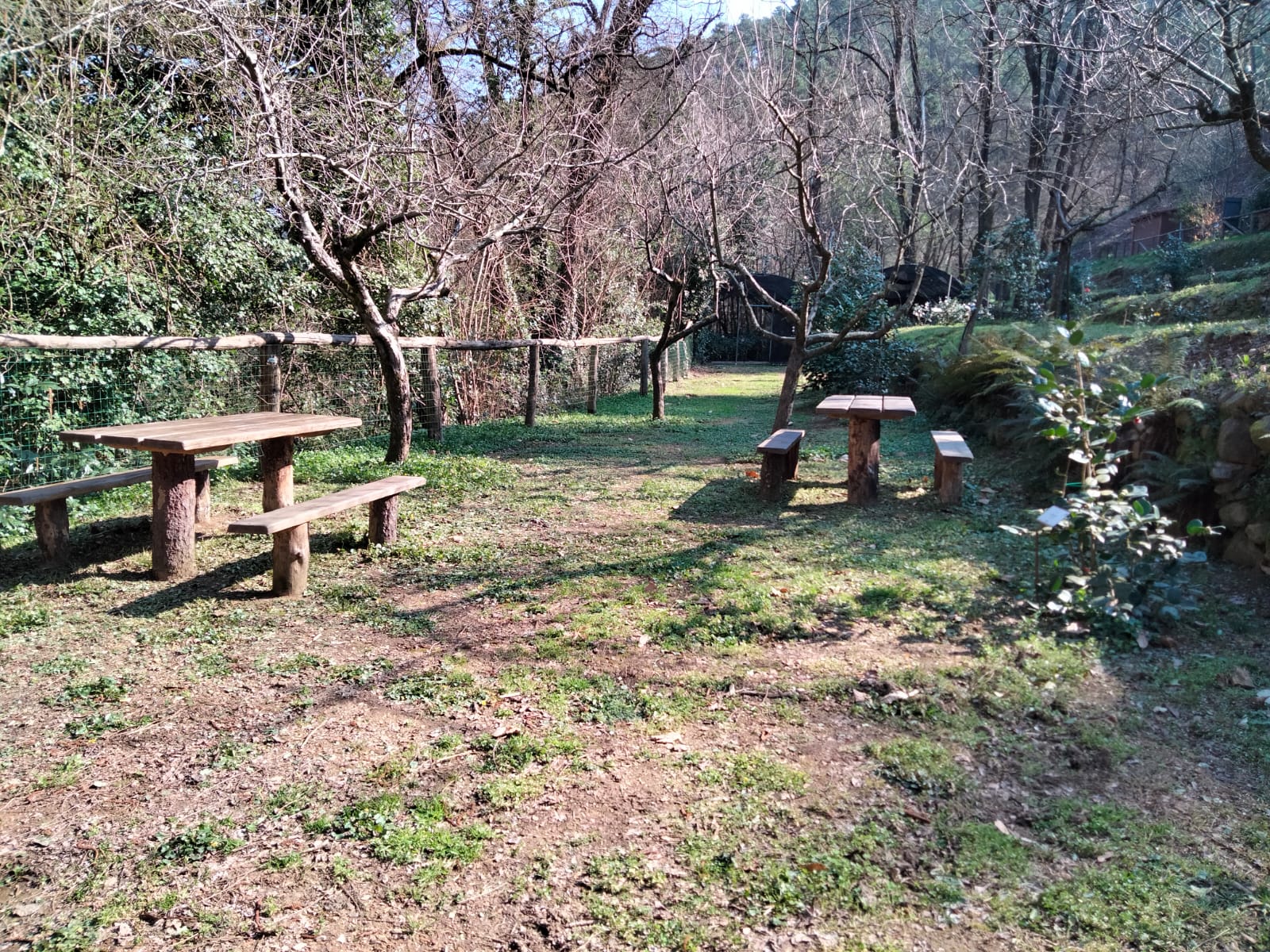
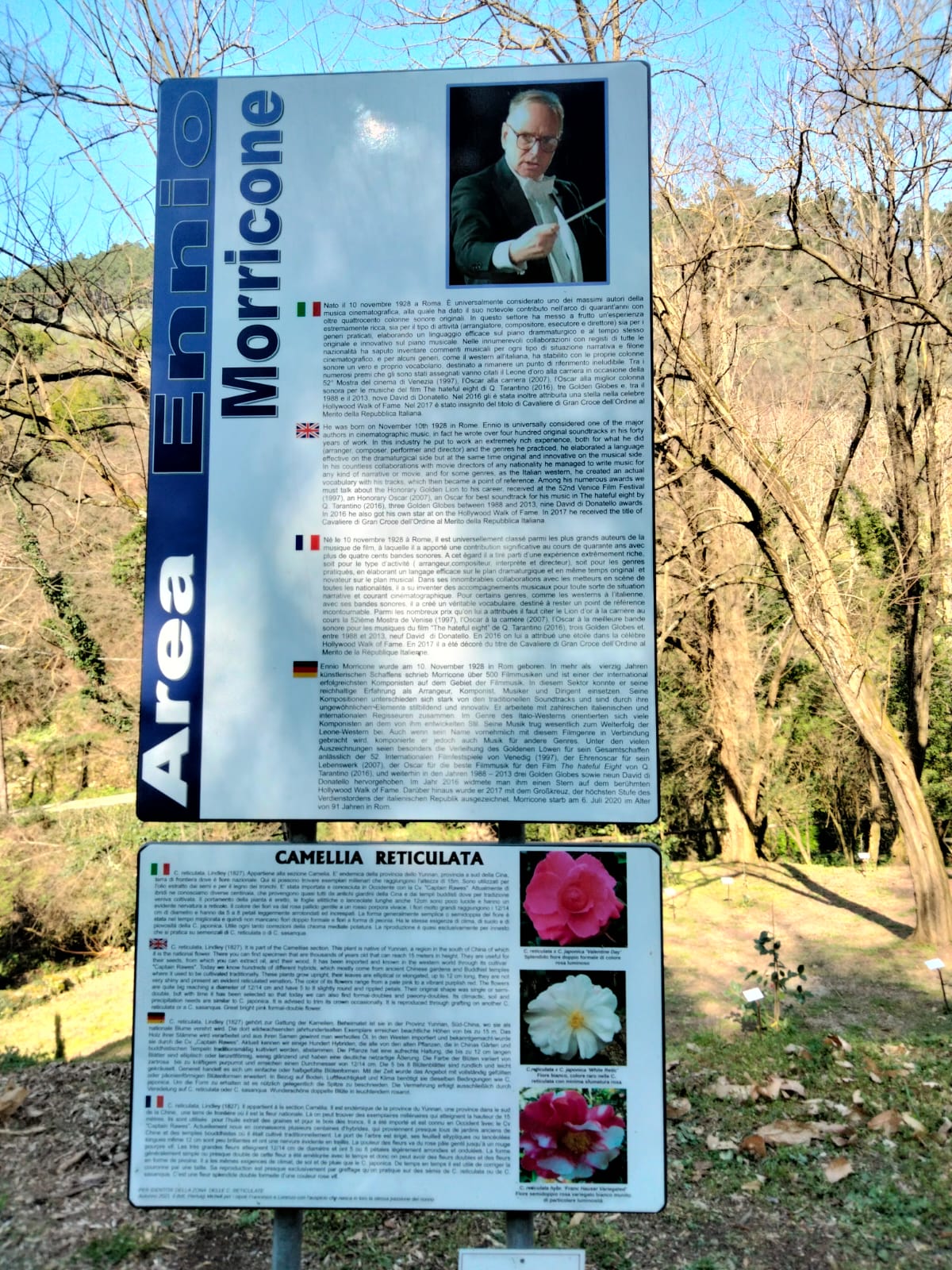
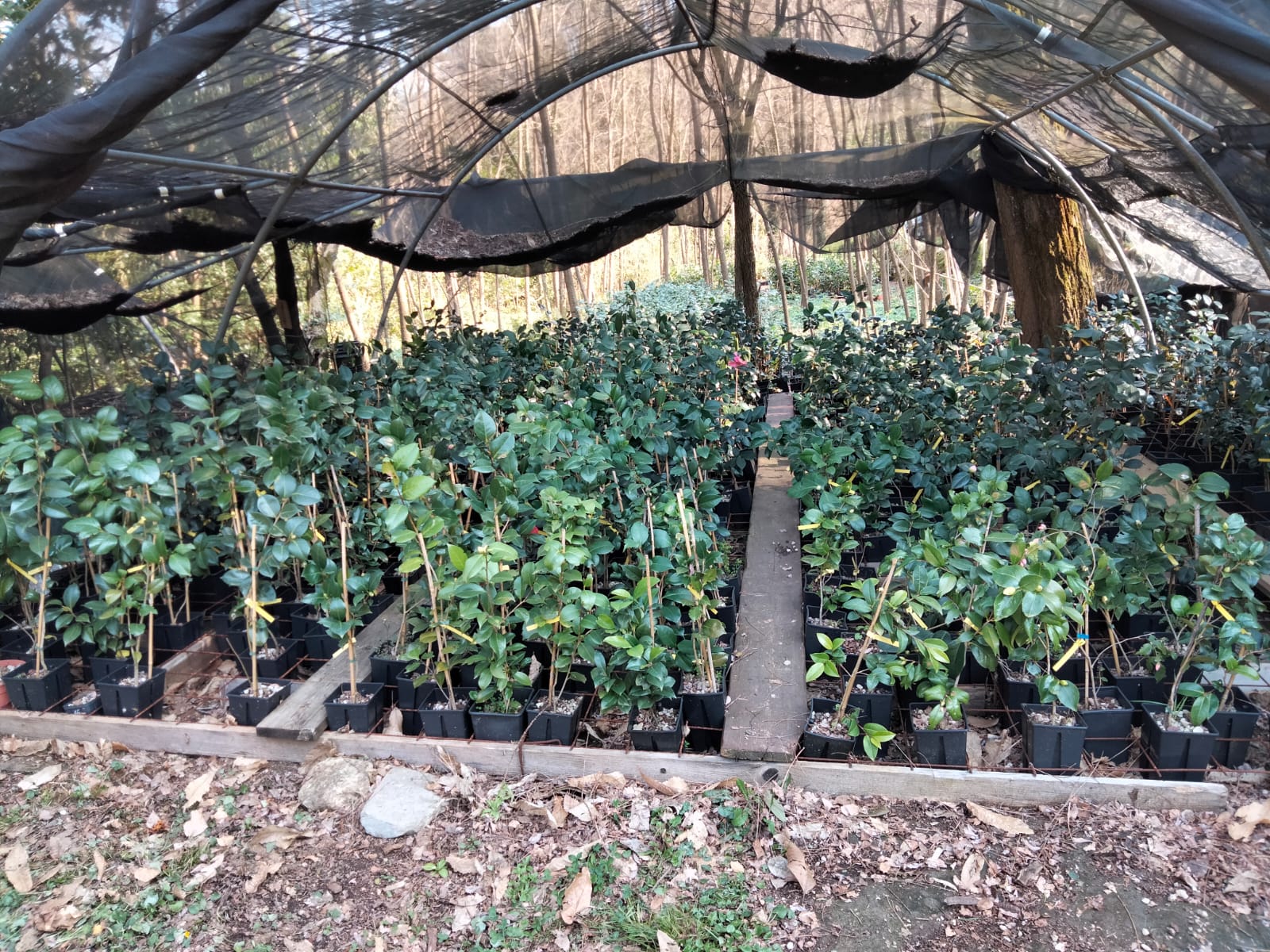
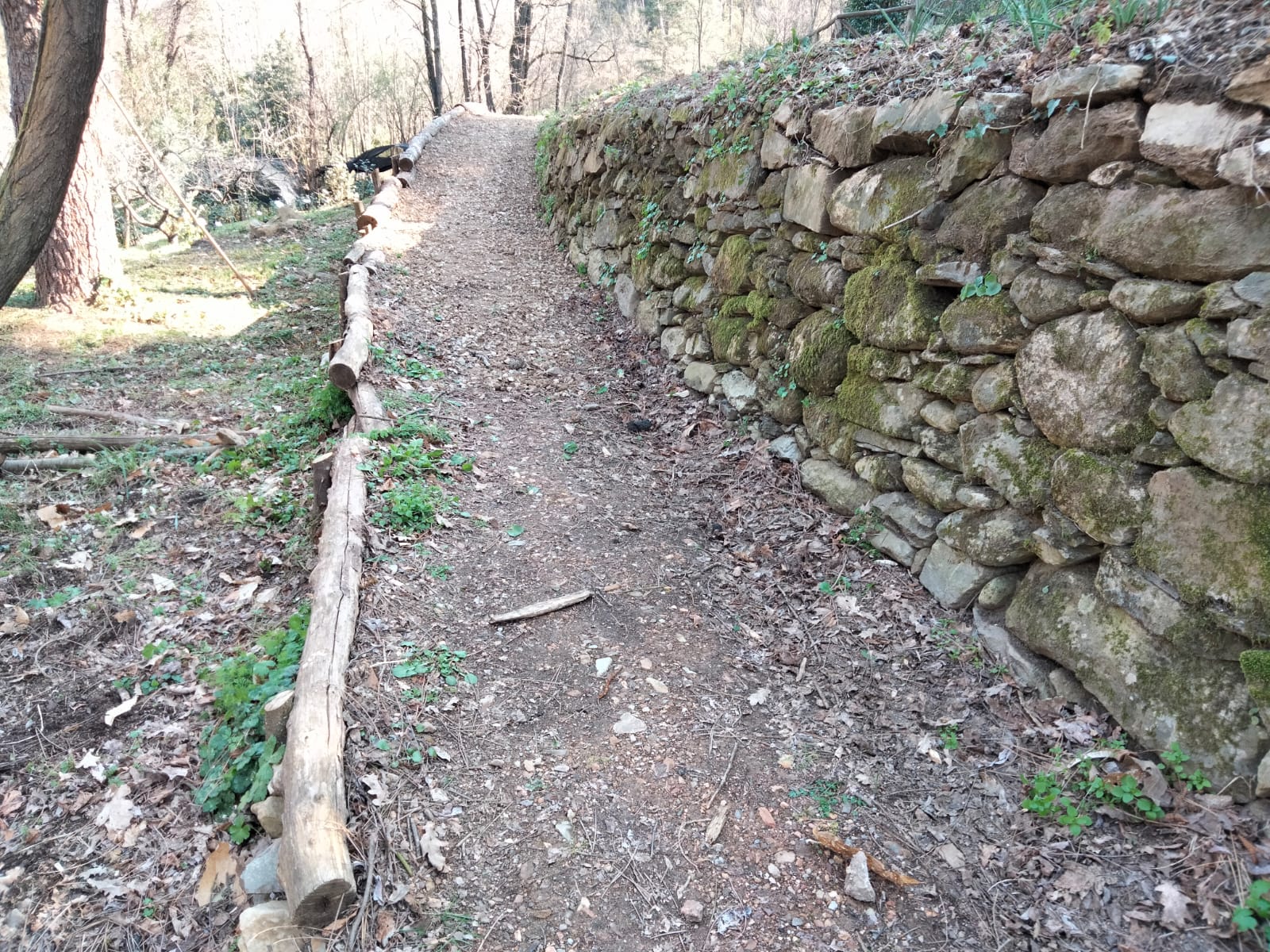

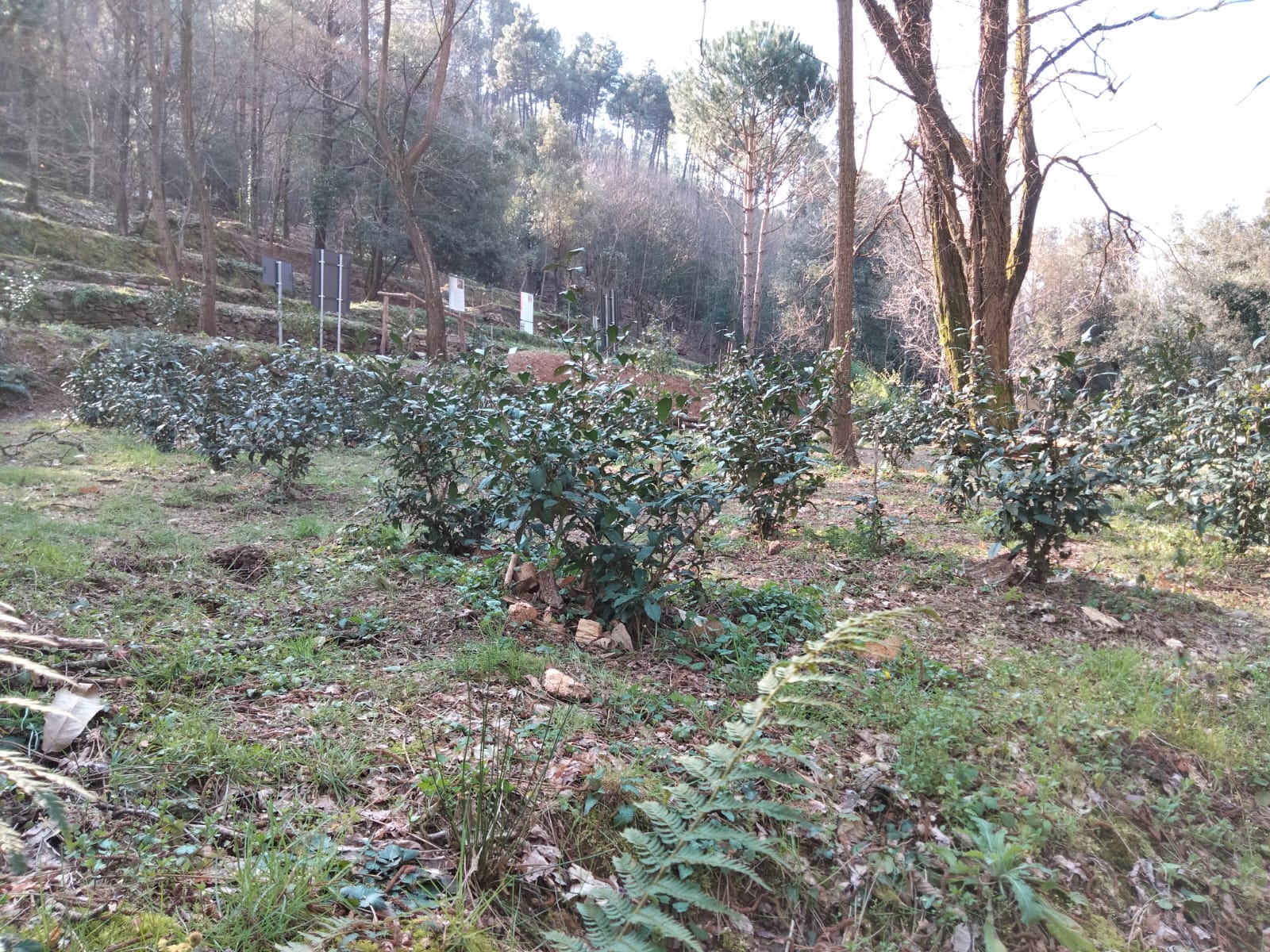
@Centro Culturale del Compitese, 2021
Content licensed to the European Union.